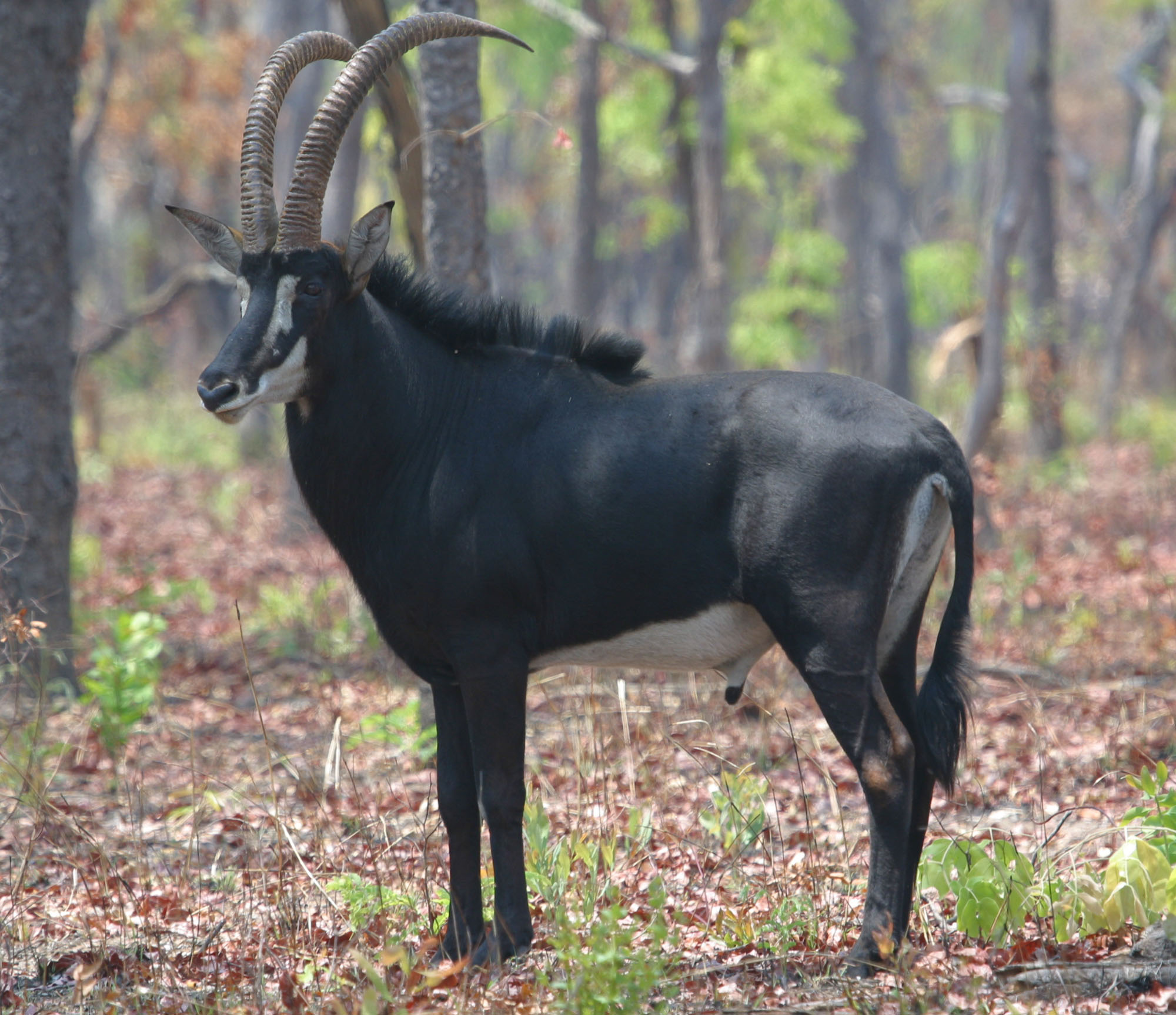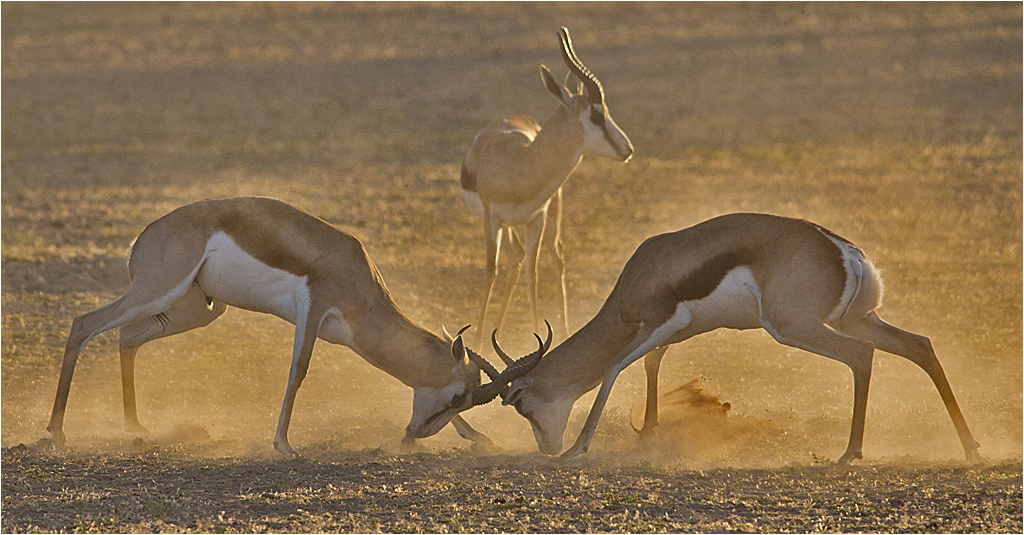|
Gazelle
A gazelle is one of many antelope species in the genus ''Gazella'' . There are also seven species included in two further genera; '' Eudorcas'' and '' Nanger'', which were formerly considered subgenera of ''Gazella''. A third former subgenus, '' Procapra'', includes three living species of Asian gazelles. Gazelles are known as swift animals. Some can run at bursts as high as or run at a sustained speed of . Gazelles are found mostly in the deserts, grasslands, and savannas of Africa, but they are also found in southwest and central Asia and the Indian subcontinent. They tend to live in herds, and eat fine, easily digestible plants and leaves. Gazelles are relatively small antelopes, most standing high at the shoulder, and are generally fawn-colored. The gazelle genera are ''Gazella'', ''Eudorcas'', and ''Nanger''. The taxonomy of these genera is confused, and the classification of species and subspecies has been an unsettled issue. Currently, the genus ''Gazella'' is widely ... [...More Info...] [...Related Items...] OR: [Wikipedia] [Google] [Baidu] |
Thomson's Gazelle
Thomson's gazelle (''Eudorcas thomsonii'') is one of the best known species of gazelles. It is named after explorer Joseph Thomson (explorer), Joseph Thomson and is sometimes referred to as a "tommie". It is considered by some to be a subspecies of the red-fronted gazelle and was formerly considered a member of the genus ''Gazella'' within the subgenus ''Eudorcas'', before ''Eudorcas'' was elevated to genus status. Thomson's gazelles can be found in numbers exceeding 200,000 in Africa and are recognized as the most common type of gazelle in East Africa. A small fast antelope, the Thomson's gazelle is said to have top speeds up to . It is the fourth-fastest land animal, after the cheetah (its main predator), pronghorn, and springbok. Taxonomy and etymology The current scientific name of Thomson's gazelle is ''Eudorcas thomsonii''. It is a member of the Genus (biology), genus ''Eudorcas'' and is classified under the Family (biology), family Bovidae. Thomson's gazelle was first Scien ... [...More Info...] [...Related Items...] OR: [Wikipedia] [Google] [Baidu] |
Gazella Dorcas
The dorcas gazelle (''Gazella dorcas''), also known as the ariel gazelle, is a small and common gazelle. The dorcas gazelle stands about at the shoulder, with a head and body length of and a weight of . The numerous subspecies survive on vegetation in grassland, steppe, wadis, mountain desert and in semidesert climates of Africa and Arabia. About 35,000–40,000 exist in the wild. Taxonomy and evolution The scientific name of the dorcas gazelle is ''Gazella dorcas'', the name coming from Ancient Greek (''dorkas''), which referred to a roe deer, gazelle or antelope. It is a member of the genus ''Gazella'' and the family Bovidae. The species was first described by Swedish zoologist Carl Linnaeus in the 10th edition of ''Systema Naturae'' in 1758. Although zoologist Theodor Haltenorth considered ''G. d. pelzelnii'' to be an independent species, the following six subspecies are identified: *''G. d.'' subsp. ''beccarii'' De Beaux, 1931 – Eritrean dorcas gazelle *''G. d.'' s ... [...More Info...] [...Related Items...] OR: [Wikipedia] [Google] [Baidu] |
Antelope
The term antelope refers to numerous extant or recently extinct species of the ruminant artiodactyl family Bovidae that are indigenous to most of Africa, India, the Middle East, Central Asia, and a small area of Eastern Europe. Antelopes do not form a monophyletic group, as some antelopes are more closely related to other bovid groups, such as bovines, goats, and sheep, than to other antelopes. A stricter grouping, known as the true antelopes, includes only the genera '' Gazella'', '' Nanger'', '' Eudorcas'', and '' Antilope''. One North American mammal, the pronghorn or "pronghorn antelope", is colloquially referred to as the "American antelope", despite the fact that it belongs to a completely different family ( Antilocapridae) than the true Old-World antelopes; pronghorn are the sole extant member of an extinct prehistoric lineage that once included many unique species. Although antelope are sometimes referred to, and easily misidentified as, "deer" ( cervids), true ... [...More Info...] [...Related Items...] OR: [Wikipedia] [Google] [Baidu] |
Eudorcas
''Eudorcas'' is a genus of antelope; the species are commonly called gazelles. ''Eudorcas'' was originally considered a subgenus of the genus ''Gazella A gazelle is one of many antelope species in the genus ''Gazella'' . There are also seven species included in two further genera; '' Eudorcas'' and '' Nanger'', which were formerly considered subgenera of ''Gazella''. A third former subgenus, ' ...'' but has since been elevated to generic status. The five species within the genus ''Eudorcas'' are: Species Social structure and behavior The social structure of gazelles consists of several types of groups. Male gazelles are territorial throughout their adult lives, though not usually before two to three years of age. During the nonterritorial periods, males usually spend their time in bachelor groups or as part of a mixed herd. Likewise, females will form migratory female groups that travel through the males' territories. As the female groups pass through, the territorial ... [...More Info...] [...Related Items...] OR: [Wikipedia] [Google] [Baidu] |
Chinkara
The chinkara (''Gazella bennettii''), also known as the Indian gazelle, is a gazelle species native to India, Iran, Afghanistan and Pakistan. Taxonomy The following six subspecies are considered valid: * Deccan chinkara (''G. b. bennettii'') (Sykes 1831) – ranges from South India, from the Ganges Valley (east to the borders of West Bengal) south at least to Hyderabad, Andhra Pradesh, Deccan Plateau; * Gujarat chinkara ''(G. b. christii)'' ( Blyth, 1842) – ranges from the desert lowlands of Pakistan, western India, Rann of Kutch, Kathiawar, Saurastra region and as far east of Ahmedabad district in Gujarat; * Kennion gazelle, eastern jebeer gazelle or Baluchistan gazelle (''G. b. fuscifrons'') ( Blanford, 1873) – occurs in eastern Iran, (southeast and along the Makran coast, Sistan and Baluchistan) southern Afghanistan, Pakistan, Balochistan Province to Sindh and northwestern India, Rajasthan, also the darkest subspecies; * Bushehr gazelle (''G. b. karamii'') ( Gro ... [...More Info...] [...Related Items...] OR: [Wikipedia] [Google] [Baidu] |
Blackbuck
The blackbuck (''Antilope cervicapra''), also known as the Indian antelope, is a medium-sized antelope native to India and Nepal. It inhabits grassy plains and lightly forested areas with perennial water sources. It stands up to high at the shoulder. Males weigh , with an average of . Females are lighter, weighing or on average. Males have long corkscrew Horn (anatomy), horns, and females occasionally develop horns, as well. The white fur on the chin and around the eyes is in sharp contrast with the black stripes on the face. Both sexes' coats feature a two-tone colouration; in males, the majority of the body is dark brown to black, with white circles around the eyes, white ears and tail, and the belly, lower jaw, and inner legs also white. Females and juveniles are yellowish-fawn to tan and display the same white areas, only with more of a beige tone than the males. Females also feature a more pronounced horizontal white side-stripe, starting around the shoulder and ending a ... [...More Info...] [...Related Items...] OR: [Wikipedia] [Google] [Baidu] |
Springbok
The springbok or springbuck (''Antidorcas marsupialis'') is an antelope found mainly in south and southwest Africa. The sole member of the genus (biology), genus ''Antidorcas'', this bovid was first Species description, described by the German zoologist Eberhard August Wilhelm von Zimmermann in 1780. Three subspecies are identified. A slender, long-legged antelope, the springbok reaches at the shoulder and weighs between . Both sexes have a pair of black, long horn (anatomy), horns that curve backwards. The springbok is characterised by a white face, a dark stripe running from the eyes to the mouth, a light brown coat (animal), coat marked by a reddish-brown stripe that runs from the upper foreleg to the buttocks across the flanks like the Thomson's gazelle, and a white Rump (animal), rump flap. Active mainly at dawn and dusk, springbok form harem (zoology), harems (mixed-sex herds). In earlier times, springbok of the Kalahari Desert and Karoo migrated in large numbers acros ... [...More Info...] [...Related Items...] OR: [Wikipedia] [Google] [Baidu] |
Queen Of Sheba's Gazelle
The Queen of Sheba's gazelle or Yemen gazelle (''Gazella bilkis'') is an extinct species of gazelle. It was sometimes regarded as a subspecies of the Arabian gazelle, which is no longer a valid species. It was found on the mountains and hillsides in Yemen, but none have been sighted since 1951, when five specimens were collected in mountains near Ta'izz, where it was reportedly common at the time. Surveys in the area of their former occurrence have failed to find any sign of its presence.Mallon, D.P. and Al-Safadi, M. 2001.Yemen. In: D.P. Mallon and S.C. Kingswood (compilers). 2001. Antelopes. Part 4: North Africa, the Middle East, and Asia. Global Survey and Regional Action Plans, pp. 63-68. IUCN, Gland. In 1985, a photograph of gazelles was taken in a private collection, Al Wabra Wildlife Farm, in Qatar. Zoologist Colin Groves Colin Peter Groves (24 June 1942 – 30 November 2017) was a British-Australian biologist and anthropologist. Groves was professor of biological anthr ... [...More Info...] [...Related Items...] OR: [Wikipedia] [Google] [Baidu] |
Procapra
''Procapra'' is a genus of Asian gazelles,Myers, P., R. Espinosa, C. S. Parr, T. Jones, G. S. Hammond, and T. A. Dewey. 2008. The Animal Diversity Web (online). Accessed May 31, 2008 at http://animaldiversity.org including three living species: * Mongolian gazelle ''P. gutturosa'' *Tibetan gazelle ''P. picticaudata'' *Przewalski's gazelle ''P. przewalskii'' The oldest fossils belonging to the genus ''Procapra'' date from the late Pliocene or early Pleistocene of central Asia, when the climate was wetter and milder than now. The genus apparently evolved from animals similar to the Pliocene gazelle '' Gazella sinensis'', and is known to have been hunted by early Neolithic The Neolithic or New Stone Age (from Ancient Greek, Greek 'new' and 'stone') is an archaeological period, the final division of the Stone Age in Mesopotamia, Asia, Europe and Africa (c. 10,000 BCE to c. 2,000 BCE). It saw the Neolithic Revo ... humans at Lake Qinghai in China. References {{Authority ... [...More Info...] [...Related Items...] OR: [Wikipedia] [Google] [Baidu] |
Nanger
''Nanger'' is a genus of antelope The term antelope refers to numerous extant or recently extinct species of the ruminant artiodactyl family Bovidae that are indigenous to most of Africa, India, the Middle East, Central Asia, and a small area of Eastern Europe. Antelopes do ...s, commonly called gazelles. ''Nanger'' was originally considered a subgenus within the genus '' Gazella'', but has since been elevated to genus status. The three living species within the genus ''Nanger'' are: * '' Nanger vanhoepeni''† References Antilopini Mammal genera Fauna of Sub-Saharan Africa {{eventoedungulate-stub ... [...More Info...] [...Related Items...] OR: [Wikipedia] [Google] [Baidu] |
Goa (antelope)
The goa (''Procapra picticaudata''), also known as the Tibetan gazelle, is a species of antelope that inhabits the Tibetan plateau. Description The goa is a relatively small antelope, with slender and graceful bodies. Both males and females stand tall at the shoulder, measure in head-body length and weigh . Males have long, tapering, ridged horns, reaching lengths of . The horns are positioned close together on the forehead, and rise more or less vertically until they suddenly diverge towards the tips. Females have no horns, and neither sex has distinct facial markings. The goa is grayish brown over most of its body, with its summer coat being noticeably greyer in colour than its winter one. It has a short, black-tipped tail in the center of its heart-shaped white rump patches. Its fur lacks an undercoat, consisting of long guard hairs only, and is notably thicker in winter. It appears to have excellent senses, including keen eyesight and hearing. Its thin and long legs enha ... [...More Info...] [...Related Items...] OR: [Wikipedia] [Google] [Baidu] |







